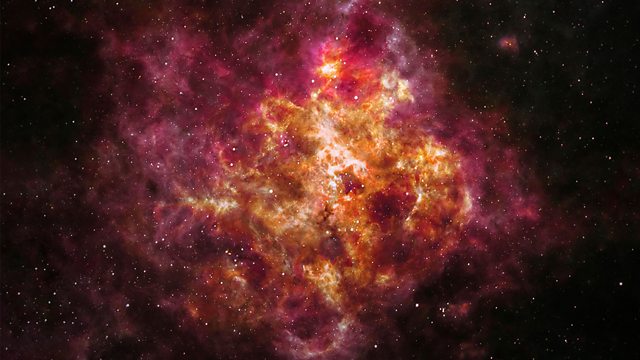Universe – The Big Bang: Before the Dawn episode 5: It’s the ultimate question: why are we here? Cutting-edge space missions take us back 13.8 billion years to the very beginning – the origin of the Universe.
Professor Brian Cox asks the ultimate question: how did the Universe come to be? The Universe is daunting in its scale. We live on one planet of eight that orbit just one of the four hundred billion stars in our galaxy. But our galaxy is just one of trillions in the universe. Yet it is amongst those galaxies that we have been able to unravel the story of the universe’s creation. Thanks to a series of discoveries, our most powerful space missions have unravelled 13.8 billion years of cosmic evolution and revealed the story of our universe from its birth all the way to the arrival of our nascent civilisation.
Our guide on this odyssey back to the dawn of time is light. Telescopes are time machines – by looking out into the distant universe they open a window to the past and one telescope more than any other has helped us journey through the history of the Universe: NASA’s Hubble Space Telescope. Over the course of three decades, Hubble has shown us cosmic evolution in action – we’ve seen stars and planets being born and galaxies colliding. Remarkably, Hubble has even found one of the first galaxies ever to exist in the universe some 13.4 billion years ago, a discovery that hints at the beginnings of our own Milky way. Vivid CGI brings this ancient galaxy to life where we witness for ourselves the first dawn. It was the beginning of a relationship between stars and planets that would, on a faraway world, lead to the origin of life – and ultimately to us.
Universe – The Big Bang: Before the Dawn episode 5
Hubble’s incredible discoveries have allowed scientists to piece together much of our cosmic story. but it cannot take us back to the most important moment in history: the Big Bang. For decades the moment the Universe began was the subject of pure speculation, but by combining astronomy and cosmology, scientists have finally found a way to put their theories to the test and study the momentous events that took place during the Big Bang. They can do this because The European space agency’s Planck space telescope has seen the afterglow of the Big Bang itself – something we call the cosmic microwave background. The unparalleled detail Planck gave us has helped confirm something remarkable: the Big Bang may not be the beginning. There was a time before the dawn – a place beyond anything we can comprehend. Brian transports us back to the fraction of a second before the Big Bang when the seeds of our universe were planted.
The story of our universe origin is a miraculously improbable odyssey, one that helps us understand how ultimately we came to be here, contemplating this vast, beautiful cosmic drama.
Big Bang
The Big Bang theory is the prevailing cosmological model explaining the existence of the observable universe from the earliest known periods through its subsequent large-scale evolution. The model describes how the universe expanded from an initial state of high density and temperature, and offers a comprehensive explanation for a broad range of observed phenomena, including the abundance of light elements, the cosmic microwave background (CMB) radiation, and large-scale structure.
Crucially, the theory is compatible with Hubble–Lemaître law—the observation that the farther away a galaxy is, the faster it is moving away from Earth. Extrapolating this cosmic expansion backwards in time using the known laws of physics, the theory describes an increasingly concentrated cosmos preceded by a singularity in which space and time lose meaning (typically named “the Big Bang singularity”). Detailed measurements of the expansion rate of the universe place the Big Bang singularity at around 13.8 billion years ago, which is thus considered the age of the universe.
After its initial expansion, an event that is by itself often called “the Big Bang”, the universe cooled sufficiently to allow the formation of subatomic particles, and later atoms. Giant clouds of these primordial elements—mostly hydrogen, with some helium and lithium—later coalesced through gravity, forming early stars and galaxies, the descendants of which are visible today. Besides these primordial building materials, astronomers observe the gravitational effects of an unknown dark matter surrounding galaxies.
Most of the gravitational potential in the universe seems to be in this form, and the Big Bang theory and various observations indicate that this excess gravitational potential is not created by baryonic matter, such as normal atoms. Measurements of the redshifts of supernovae indicate that the expansion of the universe is accelerating, an observation attributed to dark energy’s existence.




